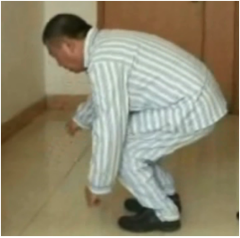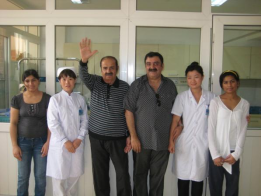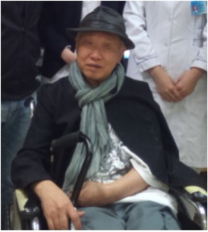
Patient presented with the sequelae of a previous cerebral hemorrhage event. The initial cerebral hemorrhage had a profound impact on his neurological functions. He was admitted to our hospital with the primary and persistent chief complaint of significant movement and sensation disorder affecting the right limbs, which had been persisting for more than one year.
Upon admission, a comprehensive neurological examination was promptly carried out to assess the extent of the damage and formulate an appropriate treatment plan. Diagnostic imaging studies, including repeated brain CT scans and MRIs, were ordered to evaluate the residual effects of the cerebral hemorrhage and any potential secondary changes in the brain tissue. Additionally, a series of neurophysiological tests were conducted to accurately measure the degree of motor and sensory impairment in the right limbs.
Pre-Treatment Condition (Before the First Course of Treatment)
• He walked at a sluggish pace, with pronounced instability when turning his body, often staggering and requiring extra effort to maintain balance.
• When standing independently, he was completely unable to lift his right lower limb, as if it were weighted down, severely restricting his mobility.
• Squatting down independently presented an insurmountable challenge for him. His lower-limb strength and coordination were so compromised that any attempt at independent squatting would result in near-falls or an inability to lower himself at all.
First Course of Stem Cell Treatment (Nov 2006 )
Outcomes After the First Course of Treatment
• He is able to walk at a normal pace and turn his body steadily while walking, showing no signs of imbalance or hesitation.
• When standing on his own, he has no difficulty in lifting his right lower limb, demonstrating improved strength and control.
• He is capable of squatting down independently, indicating enhanced lower - limb strength, balance, and coordination.
Progress Summary & Future Outlook
Looking ahead, the patient's current progress is promising. With continued rehabilitation, he can expect to further enhance his physical functions. He may gradually regain more refined control over his right-limb movements, enabling him to perform complex tasks with ease. His balance and stability during daily activities will likely improve further. In the long run, he could potentially return to a near-normal lifestyle, participating in social and physical activities without significant limitations, and fully integrating back into his community. We are optimistic that with consistent efforts, his quality of life will be substantially enhanced.


